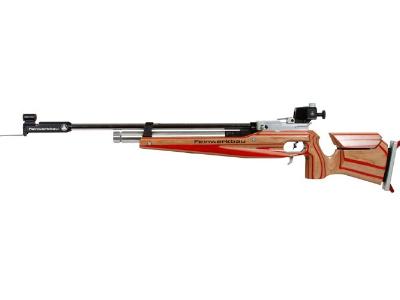
Air Rifle
Versatile air rifle built for target shooting, plinking, or small game – power, accuracy, and fun in every shot.
Air Rifle JROTC Test: A Comprehensive Guide
Understanding the Air Rifle JROTC Test
The Air rifle JROTC test is a vital component of the Junior Reserve Officers’ Training Corps (JROTC) program, aimed at developing marksmanship skills among cadets. This test not only evaluates shooting accuracy but also emphasizes safety and discipline, which are core values of the JROTC curriculum.
Components of the Air Rifle JROTC Test
The air rifle test typically includes several key components:
- Shooting Position: Cadets must demonstrate proficiency in various shooting positions including prone, standing, and kneeling.
- Ammunition Handling: Proper handling and loading of air rifles are critical to ensure safety during the test.
- Scoring System: Targets are scored based on accuracy, with points awarded for proximity to the bullseye.
- Tie-Breaking Procedures: In cases of ties, additional rounds may be required to determine rankings.
Shooting Techniques for Success
To excel in the air rifle JROTC test, cadets should focus on mastering essential shooting techniques:
- Breathe Control: Proper breathing techniques can significantly enhance stability while aiming.
- Sighting Alignment: Ensuring that sights are correctly aligned with the target is crucial for accurate shots.
- Trigger Control: Smooth trigger pulls help prevent jerking movements that could throw off aim.
- Mental Preparation: Staying calm and focused can improve performance under pressure during testing conditions.
The Importance of Safety Protocols
An essential aspect of the air rifle JROTC test is adherence to safety protocols. Cadets must be trained in safe gun handling practices, including:
- Keeps fingers off the trigger until ready to shoot.
- Aim only at designated targets.
- Clearly communicate when a firearm is loaded or unloaded.
Tips for Preparing for the Air Rifle JROTC Test
Cadets looking to prepare effectively for their upcoming tests should consider these tips:
- Create a Practice Schedule: Regular practice sessions help build muscle memory and confidence.
- Pursue Feedback from Instructors: Constructive criticism can provide insights into areas needing improvement.
The Role of Teamwork in Training
The air rifle training environment fosters teamwork among cadets. Working together allows participants to share techniques, motivate each other, and create a supportive atmosphere that enhances learning experiences. Participation in team drills can also simulate competitive scenarios similar to those encountered during actual tests.
A successful performance on the air rifle JROTC test not only reflects individual skill but also embodies teamwork, discipline, and commitment—qualities integral to any aspiring leader within the program. By focusing on proper preparation and adhering strictly to safety protocols, cadets can achieve their best results while participating in this prestigious event. CONTACT US YOUTUBE